Abstract
By means of glutaraldehyde fixation, human erythrocytes are "frozen" while suspended in turbulent shear flow. As the shearing is increased in steps from 100 to 2,500 dyn/cm2, the deformed cells evolve gradually toward a smooth ellipsoidal shape. At stresses above 2,500 dyn/cm2, approximately, fragmentation of the cells occurs with a concomitant increase in free hemoglobin content of the suspending medium. The photographic evidence suggests that the cells rupture in tension in the bulk flow.
Full text
PDF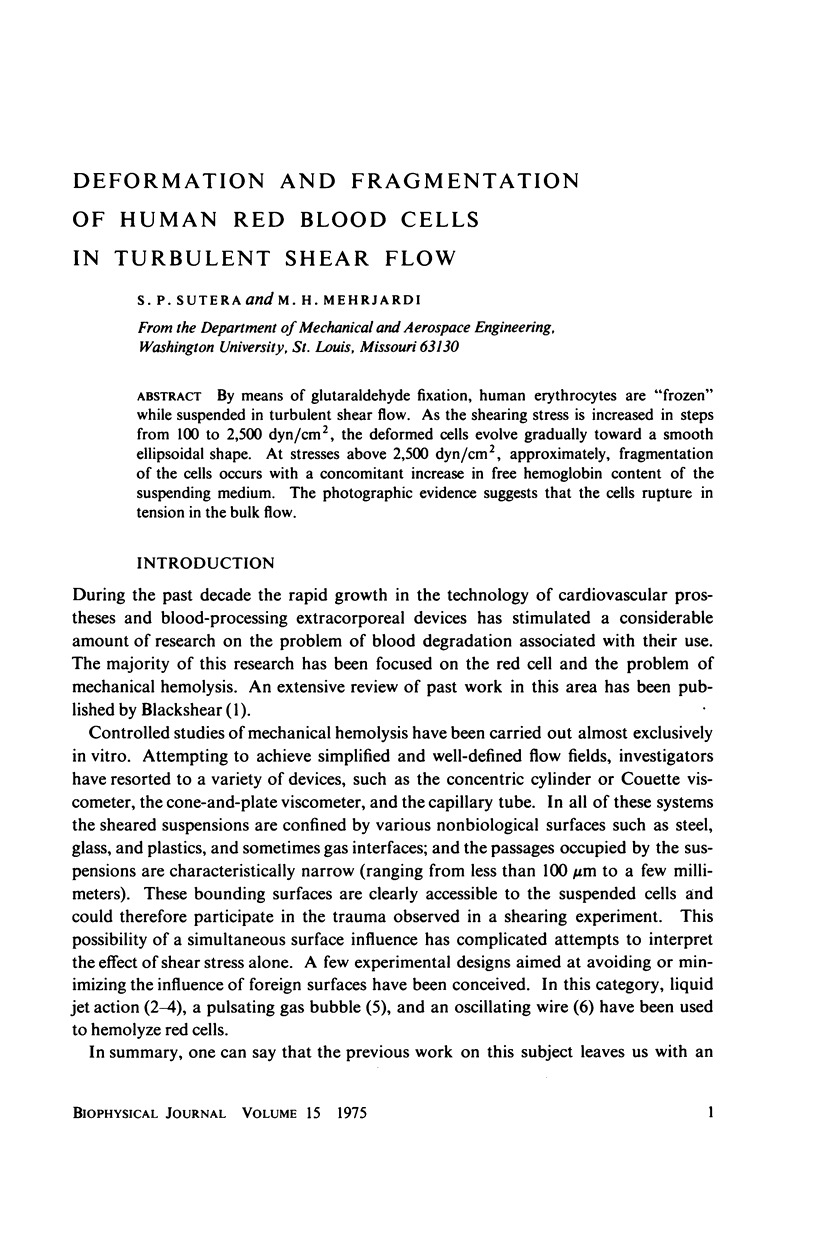
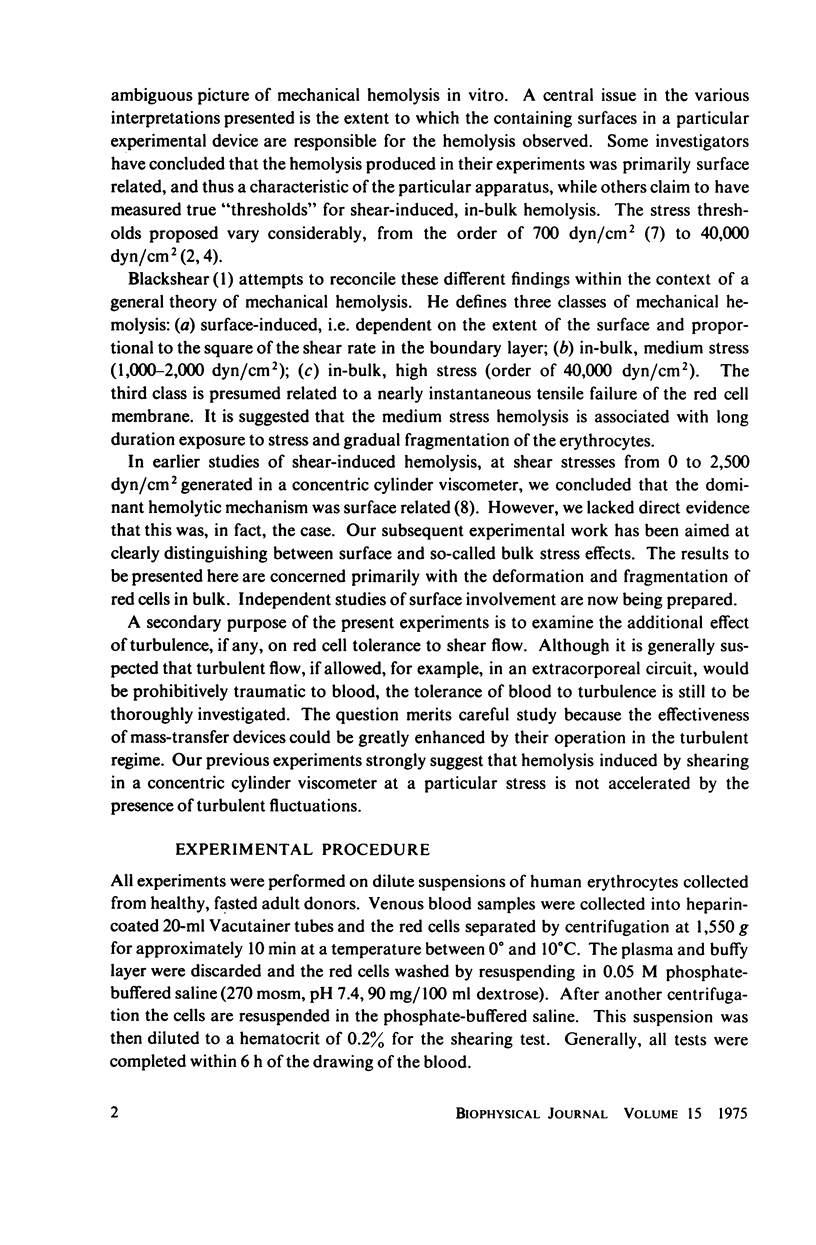
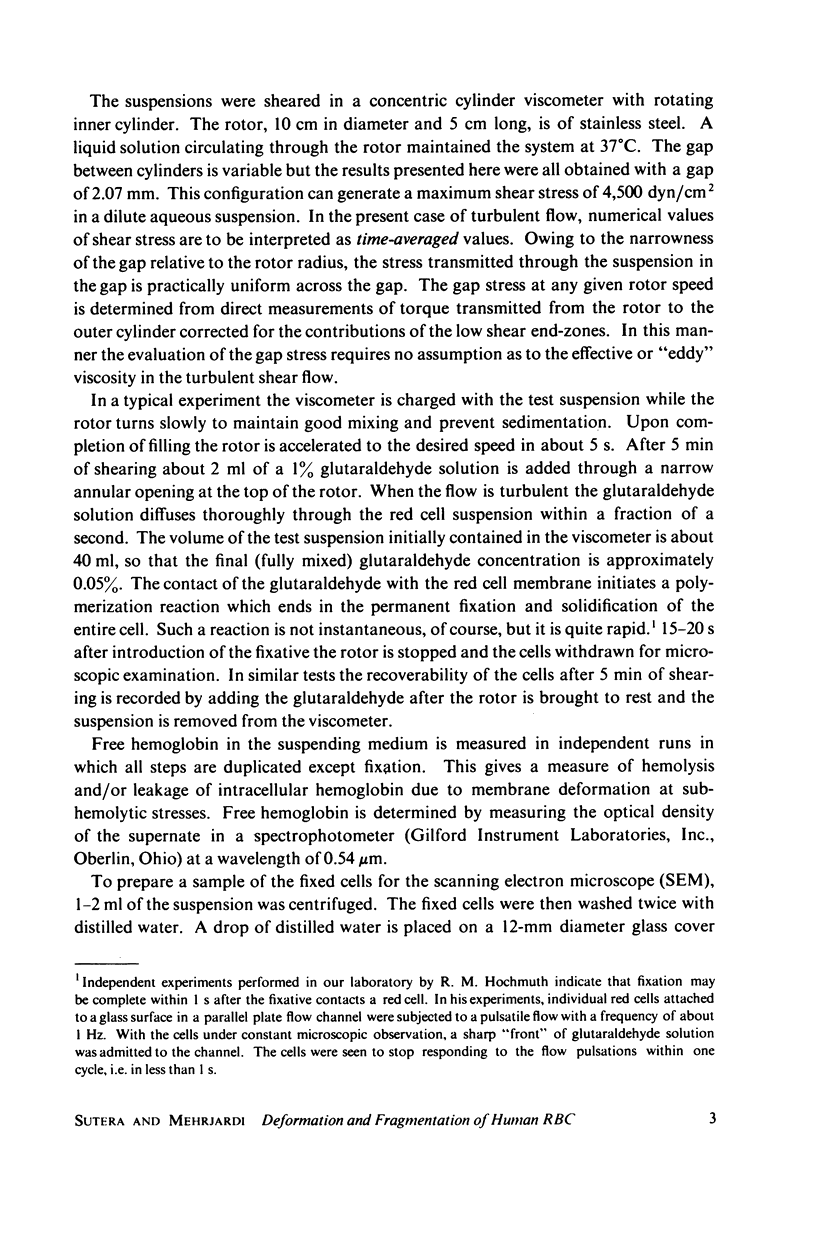
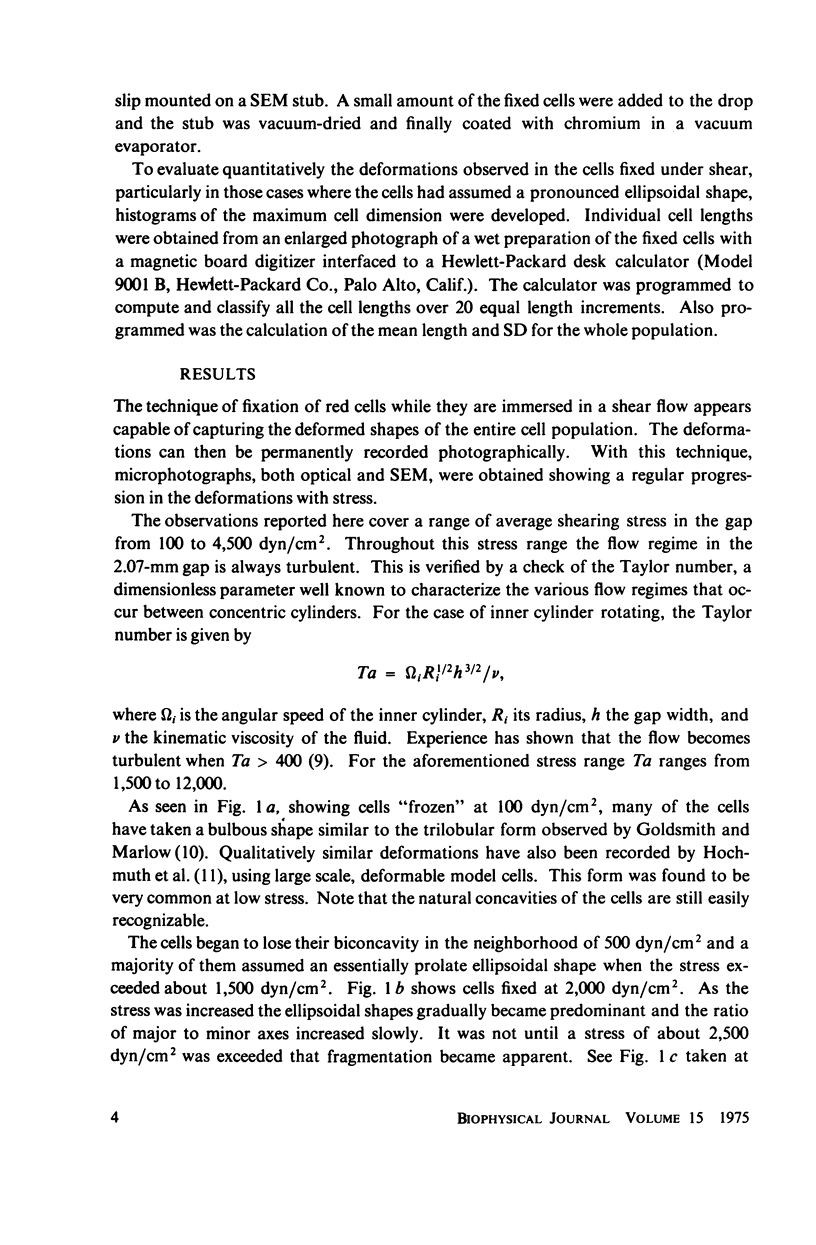
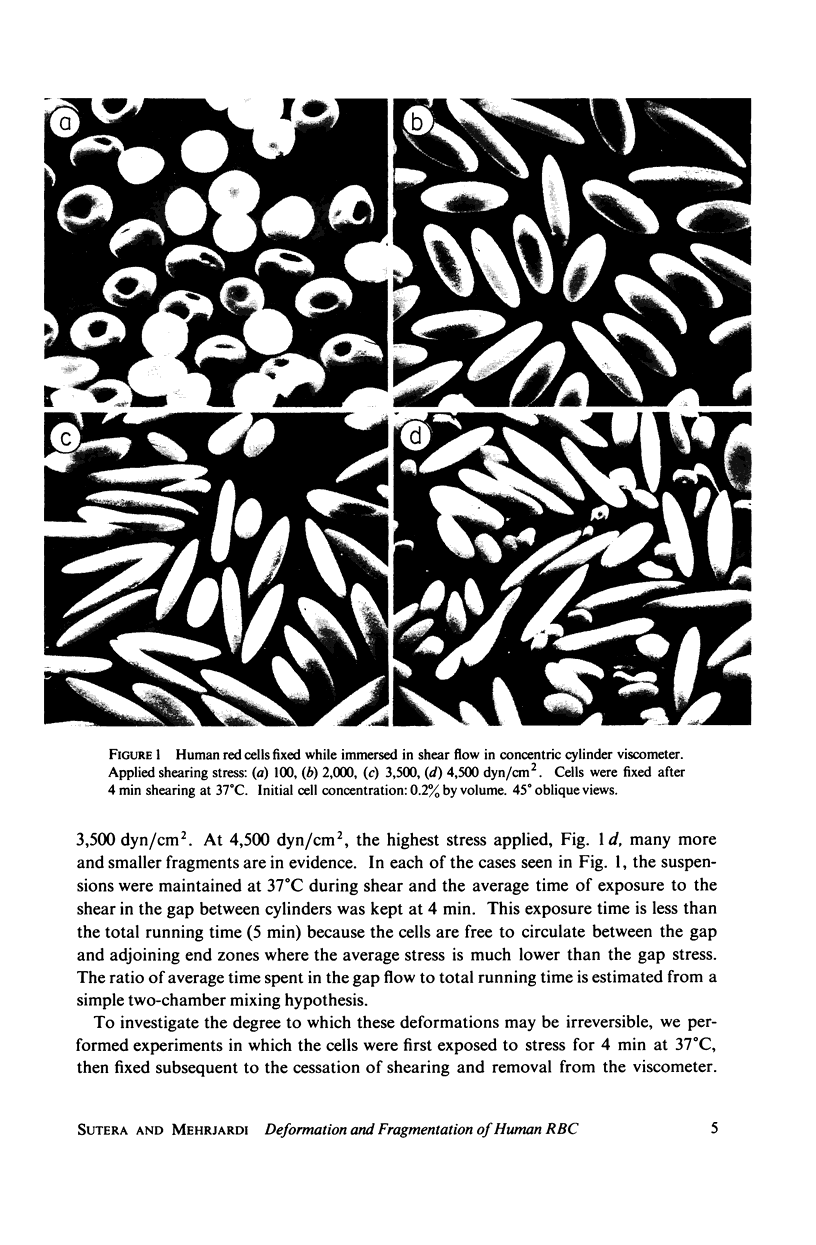
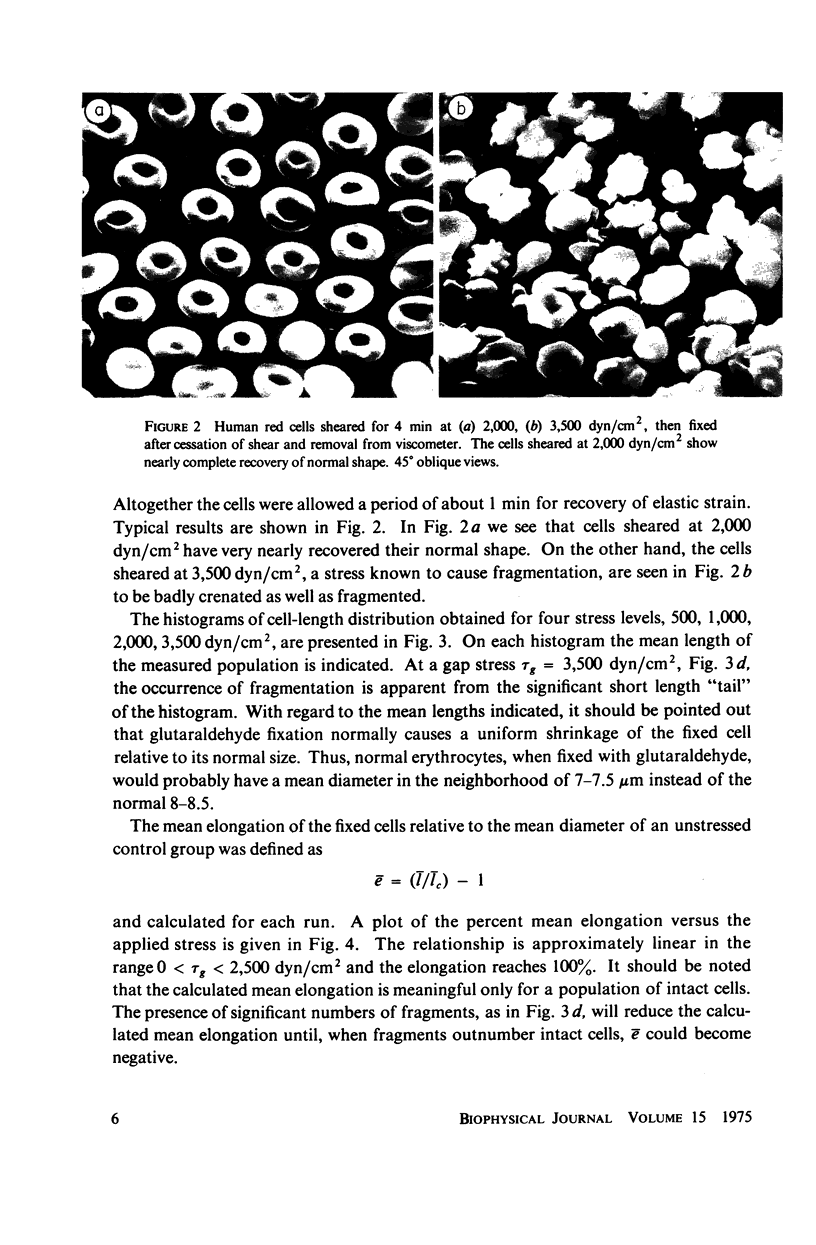
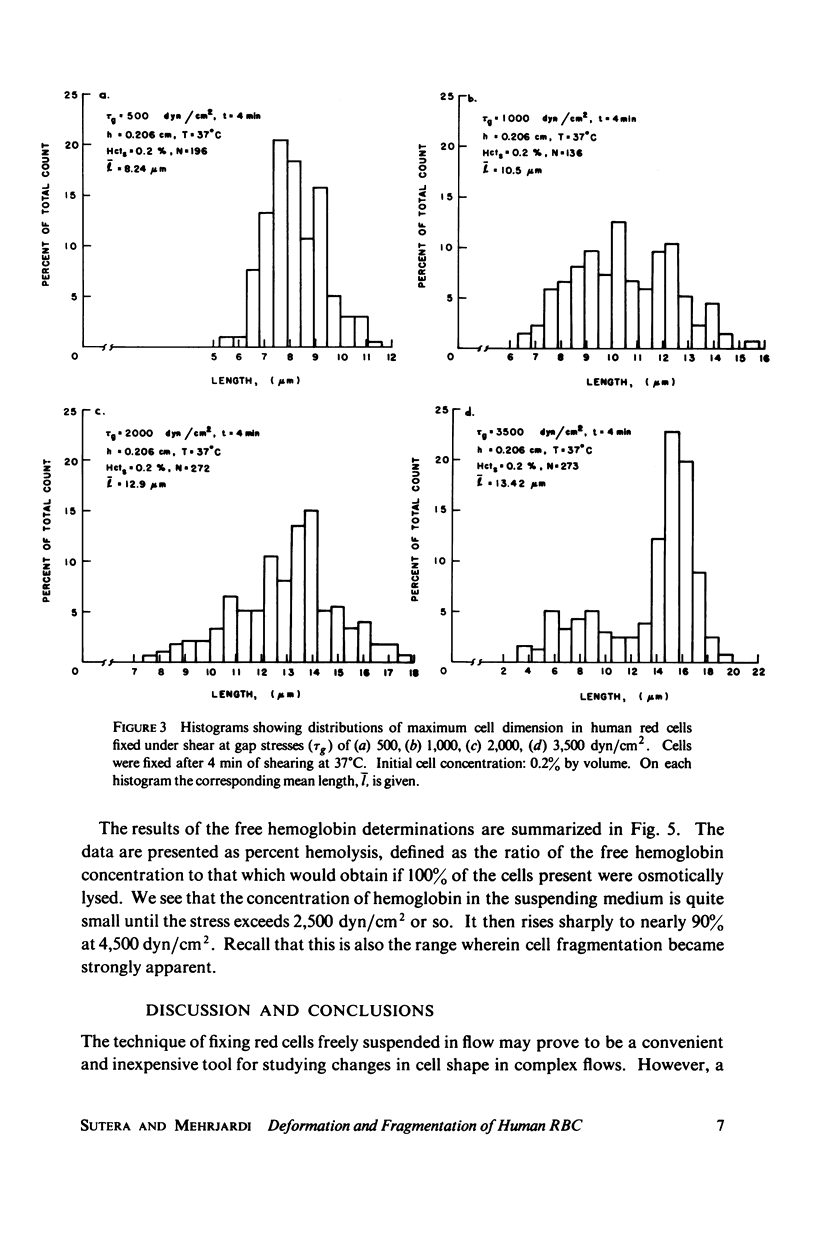
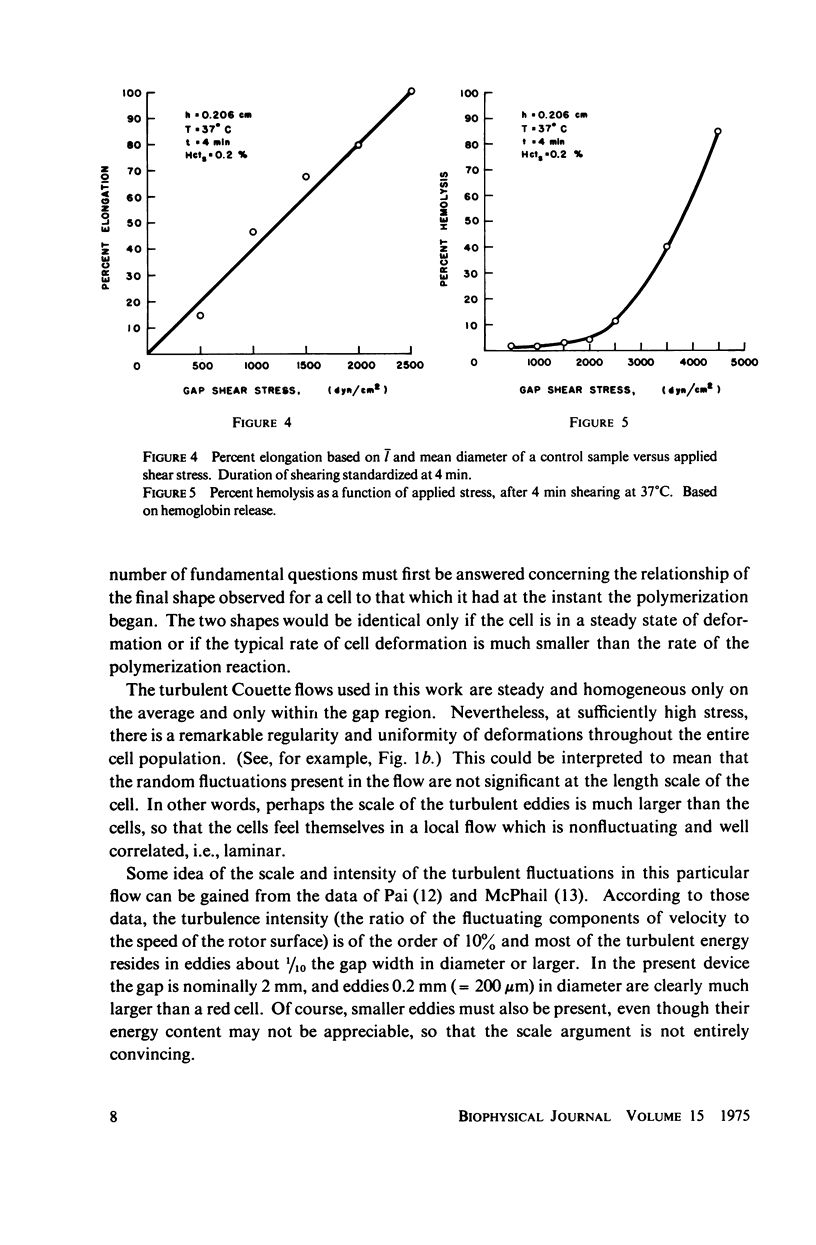
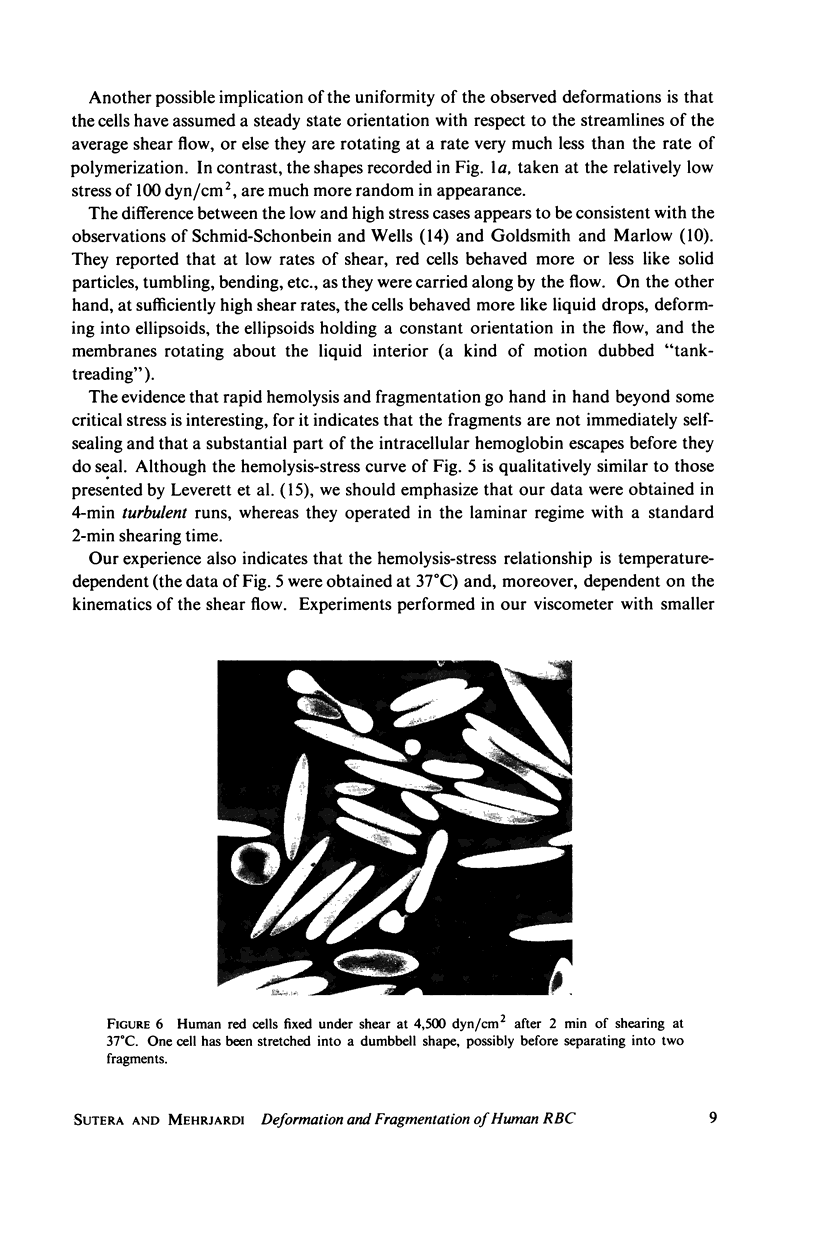
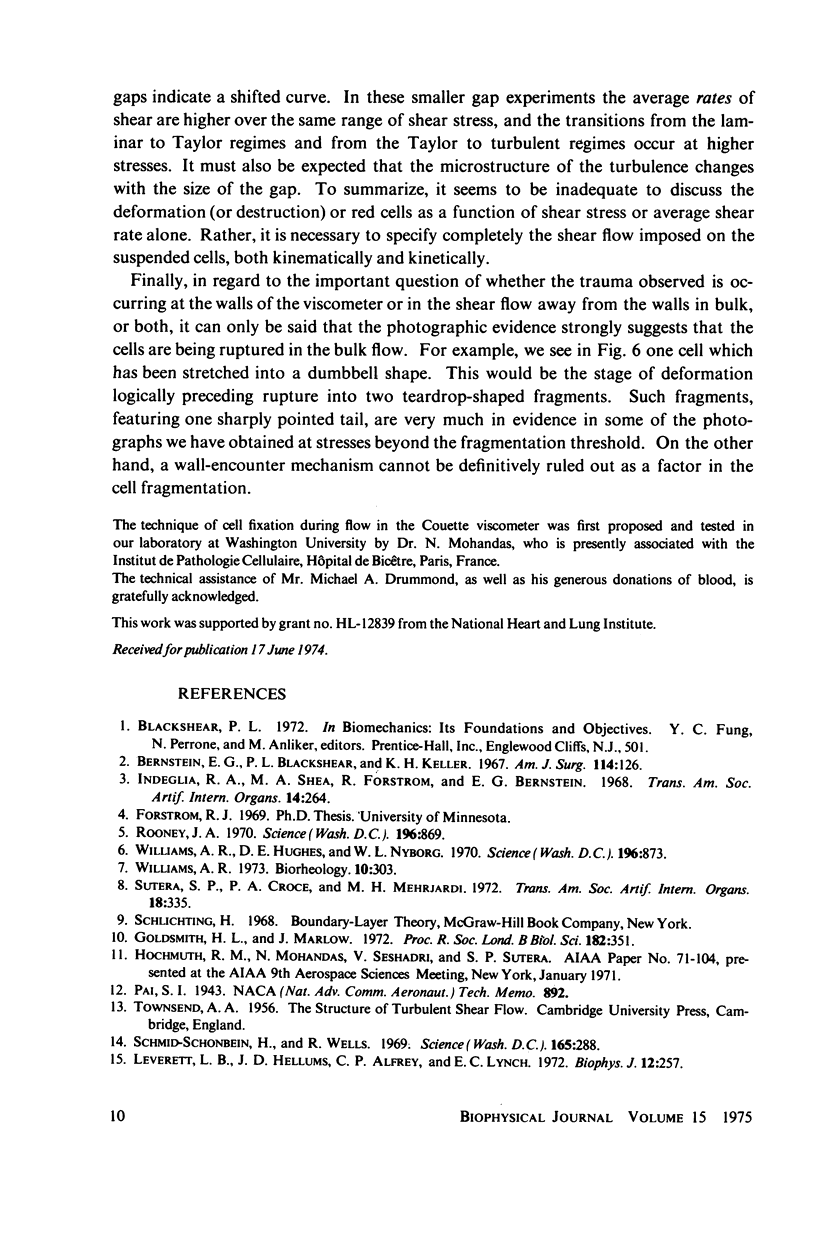
Images in this article
Selected References
These references are in PubMed. This may not be the complete list of references from this article.
- Bernstein E. F., Blackshear P. L., Jr, Keller K. H. Factors influencing erythrocyte destruction in artificial organs. Am J Surg. 1967 Jul;114(1):126–138. doi: 10.1016/0002-9610(67)90047-5. [DOI] [PubMed] [Google Scholar]
- Indeglia R. A., Shea M. A., Forstrom R., Bernstein E. F. Influence of mechanical factors on erythrocyte sublethal damage. Trans Am Soc Artif Intern Organs. 1968;14:264–272. [PubMed] [Google Scholar]
- Leverett L. B., Hellums J. D., Alfrey C. P., Lynch E. C. Red blood cell damage by shear stress. Biophys J. 1972 Mar;12(3):257–273. doi: 10.1016/S0006-3495(72)86085-5. [DOI] [PMC free article] [PubMed] [Google Scholar]
- Schmid-Schöenbein H., Wells R. Fluid drop-like transition of erythrocytes under shear. Science. 1969 Jul 18;165(3890):288–291. doi: 10.1126/science.165.3890.288. [DOI] [PubMed] [Google Scholar]
- Sutera S. P., Croce P. A., Mehrjardi M. Hemolysis and subhemolytic alterations of human RBC induced by turbulent shear flow. Trans Am Soc Artif Intern Organs. 1972;18(0):335-41, 347. doi: 10.1097/00002480-197201000-00084. [DOI] [PubMed] [Google Scholar]
- Williams A. R., Hughes D. E., Nyborg W. L. Hemolysis near a transversely oscillating wire. Science. 1970 Aug 28;169(3948):871–873. doi: 10.1126/science.169.3948.871. [DOI] [PubMed] [Google Scholar]
- Williams A. R. Shear-induced fragmentation of human erythrocytes. Biorheology. 1973 Sep;10(3):303–311. doi: 10.3233/bir-1973-10303. [DOI] [PubMed] [Google Scholar]





